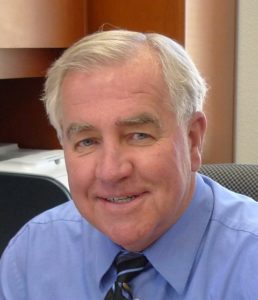Conservative and Responsible Management
 By Jim Abercrombie, El Dorado Irrigation District General Manager
By Jim Abercrombie, El Dorado Irrigation District General Manager
As I write this column, EID workers are in the thick of widespread emergency repairs. The emergency repairs, resulting from damages caused during the storms of January/February, are some of the most significant we’ve experienced in recent memory. Some of those repairs are to canal and flume sections perched high on hard-to-access mountain sides.
EID maintains 22 miles of canals, flumes, and tunnels in its federally licensed hydroelectric system. This system also transports a significant amount of our customers’ drinking water supply from high Sierra sources. And that’s only one link in the chain of interconnected infrastructure and facilities that make possible the services we provide to our customers 24 hours a day.
EID’s complex system requires continuous maintenance and scheduled reconstruction. That’s why we plan our capital improvements carefully, issuing bonds to finance long-lived infrastructure that will benefit generations of customers.
In order to make the repairs necessary to maintain our complex system of infrastructure, you must have a rock solid financial plan in place. EID finances are stronger today than ever before. It has taken time to get to this point, but the careful planning and tough decisions made by EID staff and the EID board of Directors have created an agency able to deal with the many challenges it faces now and into the future.
EID’s diverse system consists of nearly a billion dollars’ worth of vital infrastructure across its five business lines—water, wastewater, recycled water, hydroelectric generation, and recreation services. To sustainably maintain such a diverse infrastructure spread out over 220 square miles of service area requires long-range, conservative financial planning and debt management. It also takes a fair amount of money for those often large projects, especially the capital improvement projects that will last for many years and benefit generations of EID ratepayers.
Before 2010, water rates had risen six times in 22 years. And during this time, many important and necessary projects were deferred. For much of that time, the district overly relied on new connection fees that were so abundant before the 2008/2009 financial crash. Coming out of that period, EID has become more conservative, more sustainable, and has developed financial plans that feature modest, regular rate increases instead of the periodic “rate shock” corrections of the past that upset many customers. This continued investment in our community infrastructure is important for the district as we face the challenges ahead of us. With a sustainably managed capital improvement plan, we’ll be prepared to continue providing the dependable service that our customers rely on every day.
EID has come a long way in recent years to introduce resiliency not only in our water supplies, but also in our finances—and we are committed to keep to this conservative path going forward. And by implementing low, single-digit rate adjustments, EID is able to direct resources to replace aging infrastructure that has served us ably for so long, and will continue to serve our community for decades to come. Fiscal responsibility and good management are the bedrock of EID’s culture and this is born out in verifiable numbers and facts. El Dorado Irrigation District—and the men and women working to ensure our complex systems run safely and reliably every single day, during normal operations and in emergencies like we’re experiencing now—stands by that.